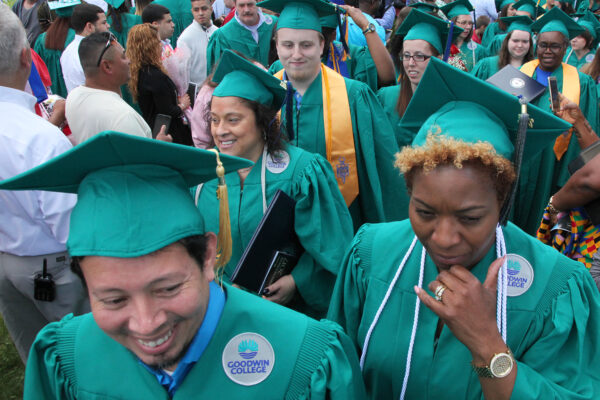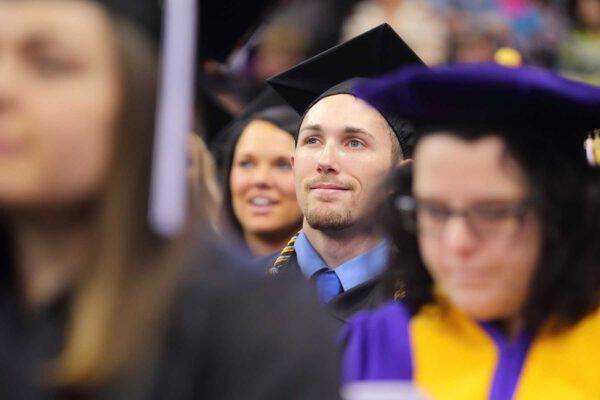By Mark M. D’Amico
Community colleges have many complementary missions, and educational offerings typically fall within four main categories: credit-based education leading to university transfer, credit-based career education yielding certificates and degrees, developmental education, and noncredit education focused on job skills or community interests. Practically speaking, these distinct buckets define course and program delivery, but when it comes to transfer, mobility, and even equity, they can hinder a student’s experience and prospects for further education.
Mobility between these four areas is important for students enrolled in workforce education programs, especially those enrolled in credit-based career education and noncredit occupational training. Credit-based career education most often builds toward a certificate or an applied associate degree (e.g., associate in applied science—AAS) in career education program areas like the health sciences or information technology. The AAS in particular has been thought of historically as a terminal credential, or one that will not lead to further study at a university. However, in my state of North Carolina, students transferring from public community colleges to University of North Carolina campuses with an AAS or an associate degree other than the associate in arts (AA) or associate in science (AS) represent the highest percentage growth among transfer types. Despite these numbers, credit mobility from AAS programs to universities is not facilitated by the otherwise robust statewide articulation agreement but is based primarily on course-by-course evaluations, many bilateral (institution-to-institution) agreements, and a handful of uniform (system-to-system) agreements in specific program areas.
While it is understandable that states focus on traditional transfer degrees (AA/AS), an exclusive focus on customary transfer paths may result in hurdles for AAS transfer students in terms of credit mobility and transfer options. Viable transfer paths for AAS graduates become the exception rather than the norm.
Students enrolled in noncredit workforce education may face an even steeper climb when looking to build on their prior education. The federal definition of noncredit alone tells the tale: “having no credit applicable toward a degree, diploma, certificate, or other formal award.” Fortunately, there is somewhat of a softening with movements toward competency-based education, credit for prior learning and prior learning assessments, and noncredit-to-credit articulation.
Regardless of the type of credit or degree, a “terminal” mindset to career preparation is not in the best interest of individuals, local and regional economies, or the community colleges themselves as they seek to increase enrollment and boost local and state educational attainment.
The no-dead-end mindset
In order to address community college workforce education with a no-dead-end mindset, I recommend the “TECH Approach,” which is comprised of four principles:
Transparency: Opportunities for students to continue their education must be clear and accessible. One of the most reasonable ways to communicate opportunities is through institutional websites that outline AAS transfer pathways and noncredit-to-credit articulation options.
A focus on equity: Considering the diverse student body of community colleges, a terminal mindset applied to workforce education is a marginalizing force. In North Carolina, higher percentages of students from economically distressed (and often rural) counties are transferring with an AAS than those from more affluent counties. Thus, it is imperative that efficient pathways to the baccalaureate are in place for AAS graduates. In addition, many community college students may get their first taste of higher education through a noncredit program to obtain employment skills. In the instances of both credit and noncredit workforce education, promoting conduits to credit-bearing or higher-level programs is an issue of equity.
Career orientation: Not all noncredit courses can or should be articulated to credit, and not all AAS graduates will pursue a baccalaureate degree. But we need to create more viable, high-demand pathways for both noncredit courses and AAS completers, and the program areas with greatest employment demand represent an opportunity for momentum. Workforce relevance can be a great driver for collaboration and innovation through the development of stackable credentials, namely progression stacks that lead to higher-level certificates and degrees.
A holistic approach: Noncredit-to-credit articulation will typically occur within an institution, and existing bilateral articulation agreements transferring the AAS to baccalaureate programs are also likely to occur through geographic partnerships between universities and neighboring community colleges. These are all positive developments for a no-dead-end mindset, and well-developed guides exist to help build strong transfer partnerships. Still, there are opportunities to take a more holistic and systematic approach through statewide policies that guide AAS transfer, similar to more typical transfer articulation agreements. This type of holistic view creates opportunities for the many, not the few fortunate enough to reside where an agreement exists.
Getting it right
While there are countless examples of community colleges working to embrace an opportunity mindset for workforce education, I’ll highlight just two.
Northern Virginia Community College has many bilateral articulation agreements to facilitate transfer from AAS programs to baccalaureate degrees, including with Old Dominion University, George Mason University, and James Madison University, and others. Through these agreements, the college is creating a path to educational and economic mobility in workforce-relevant fields such as cybersecurity, engineering technology, health sciences, and early childhood education. Additionally, the articulation agreements are transparent and all posted to one website that serves as a resource for students and their advisors.
South Piedmont Community College, serving Anson and Union Counties just outside of Charlotte, North Carolina, provides clear pathways for students by aligning noncredit and credit-based offerings. The process, which so far has focused on areas relevant to the local economy (e.g., HVAC, automotive technology, welding, electrical, health care, and advanced manufacturing), involves faculty discussions followed by a formal establishment of the articulation and a listing on a website for students and advisors to use. The current agreements include a variety of noncredit courses as well as industry-recognized credentials that are eligible for credit toward a certificate or degree.
These examples demonstrate that whether it’s AAS articulation into baccalaureate degrees or the transfer of noncredit workforce education into credit-based programs, terminating the terminal nature of career-focused community college education is achievable. I encourage community colleges and their industry and university partners to consider the importance of educational and economic mobility when working toward a no-dead-end mindset. Workforce needs can and should drive the urgency of such work, all while promoting transparency to help students, advisors, and employers understand the continued opportunities for higher-level credentials.
Ultimately, it is my hope that innovative agreements will not only be available, but also become the norm within institutions as well as state systems of higher education.
If you have any questions or comments about this blog post, please contact us.


